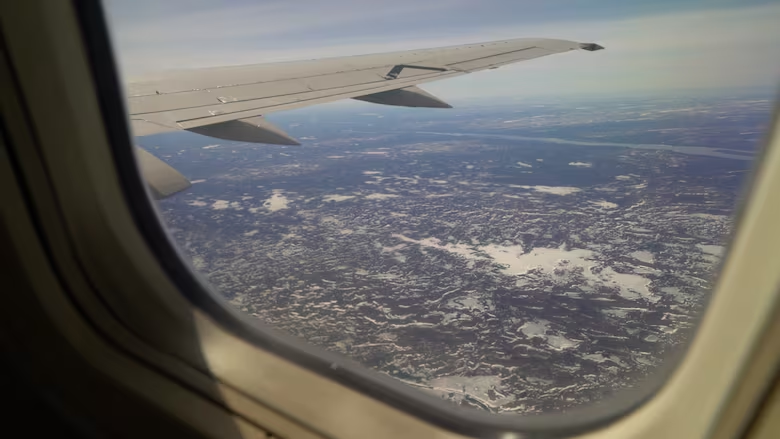4 common situations on an airplane that may cause flight fright but are actually normal
'You have to put your utmost trust in the pilots that are in the cockpit'

Flying can be scary for some, but as it turns out, some seemingly frightening flight occurrences are actually totally normal.
Here are four possibly disconcerting aviation events explained straight from a pilot's mouth.
Turbulence
The worst kind of turbulence passengers will experience is called clear air turbulence, according to Audrey Kahovec, pilot and general manager at the Regina Flying Club.
She said turbulence is created by heat.
"The air heats up and with the air going over the surface of the earth, [it's] going to generate some air pockets."
Thunderstorms and flying over high objects, such as mountain ranges, are also factors that could cause the plane to jolt around in the air.
"It's nothing to be afraid of," she said.
There are a few things pilots can do when turbulence hits.
"If anything, they're going to reduce the power in the aircraft a little bit to make its performance [better] and with the wind, it makes it safer when flying in these conditions," she said.
Kahovec said they can refer to air traffic control for previous flights on the same flight path that day to see what they did — and if it improved their flight. For example, air traffic control could tell the pilot that the previous flight ascended or descended a couple thousand feet and that it seemed to smooth out.
Go-arounds
According to Kahovec, a go-around is when a plane is ready to land but there is an obstruction (which could be anything from fog to an animal or other plane on the runway) and the plane has to abort the landing, pulling the plane up and retracting the landing gear.
"So in the back, you're expecting to land, but as pilots in the front, they're looking out for your safety," she said.
"Once it's safe to do so and they've taken care of everything up front, that's when they'll, time-permitting, make that announcement to the back to let the passengers know what's happening."
Pilots may elect to try another runway, or just circle back and try again on their assigned runway, Kahovec said. But one thing they have to take into account is their fuel levels when making their decision on a go-around.
Kahovec said that in the aviation world, it's a common and understood practice and that commercial pilots especially are trained to a very high standard.
Circling
Generally, planes will circle above airports for the same reasons planes sometimes need to perform go-arounds. This could be anything from weather to an incident on the runway.
Pilots have to weigh their options between circling for a little while or turning back to land at a different airport. Sometimes weather or a plane stuck on the runway can clear out in a short enough time that circling around the airport is an acceptable delay.
Kahovec also mentioned that circling can happen at busy airports if planes get there a few minutes early or late. Sometimes, airports will give pilots exact times they need to be there when they have many planes scheduled to come in at the same time.
"If you're speeding along at your cruise speed and air traffic control can see on their screen with the speed vector that you're going to be ahead of this time and they need you to slow down, they'll let you know," she said.
Otherwise, you'll have to circle when you get there.
Turning around when you're already there
Making a journey on a plane and then having to turn around and come back sounds like a nervous flyer's nightmare, but it can happen.
Like most other things on this list, this unfortunate reality of flying can be chalked up to bad weather.
Pilots have a minimum distance they have to be able to see the runway at. If weather like a thunderstorm is impeding that, planes may have to land at another airport, including the one they took off from.
Weather is plotted before a flight but can change over the course of one. It's possible to beat a storm to your destination but other times, it beats you. Also, it is illegal to fly in freezing rain.
"You have to put your utmost trust in the pilots that are in the cockpit and trust their ability — that this is what they are trained for and what they're doing for the utmost safety of you sitting in the back."

